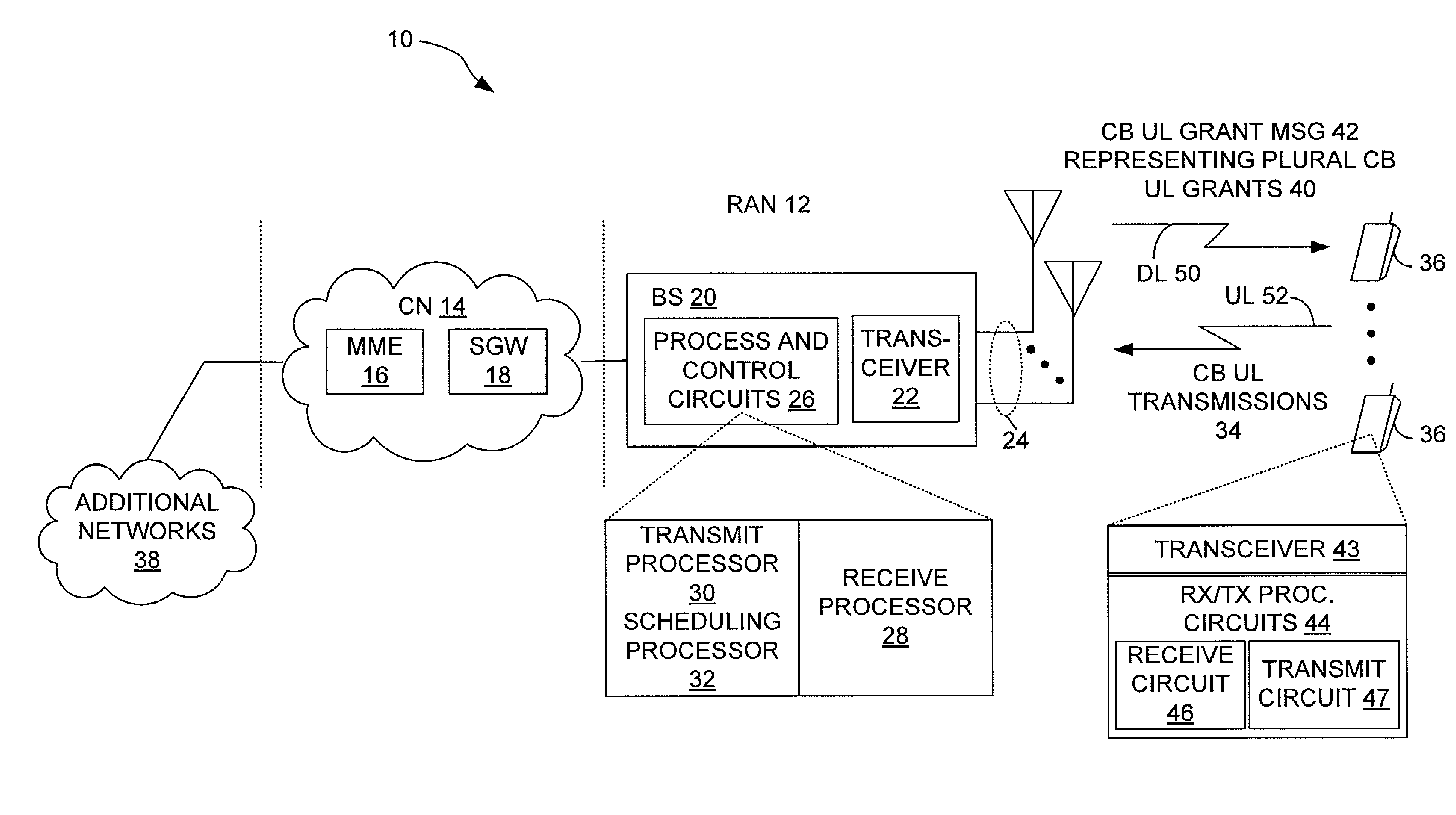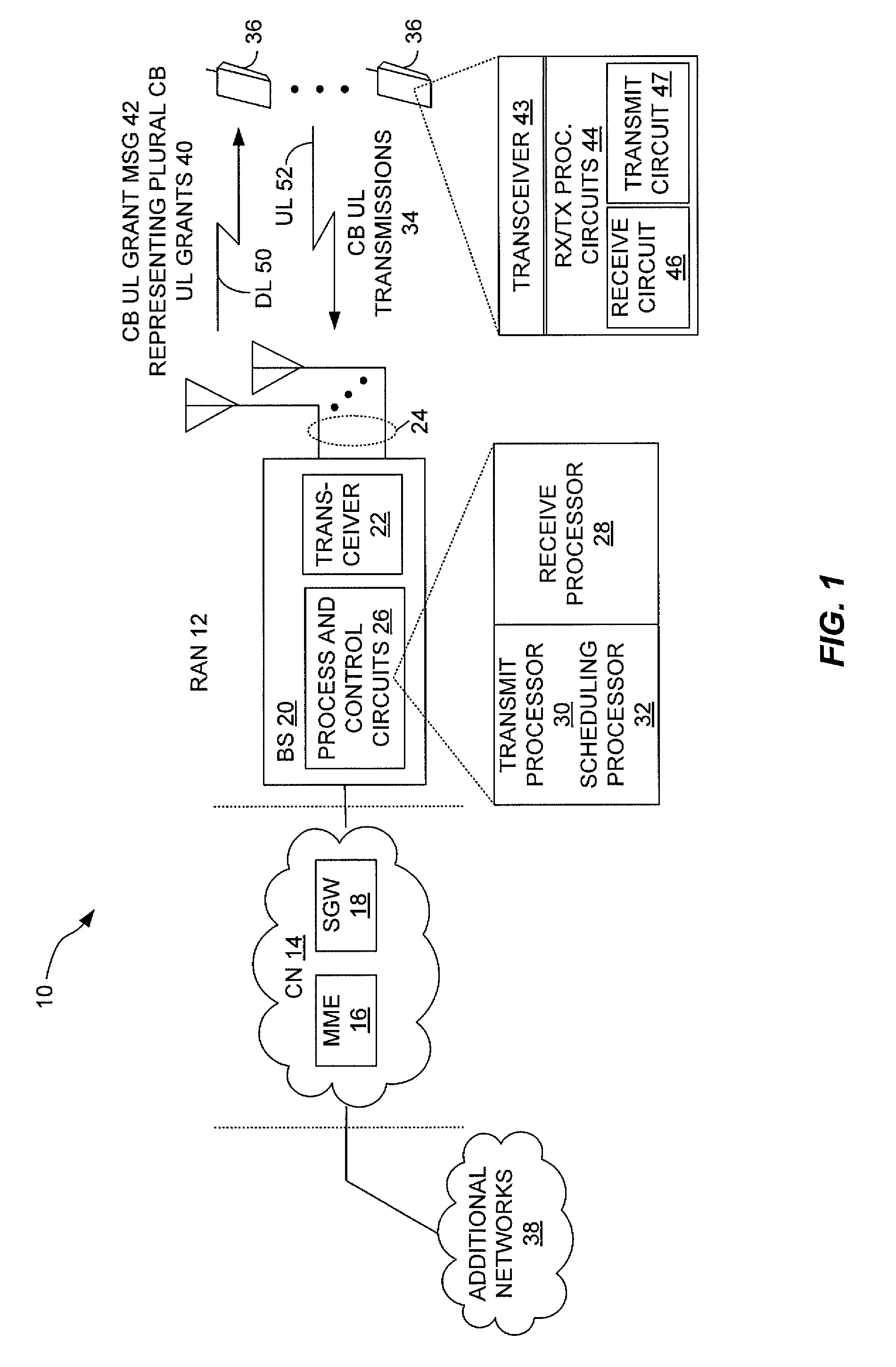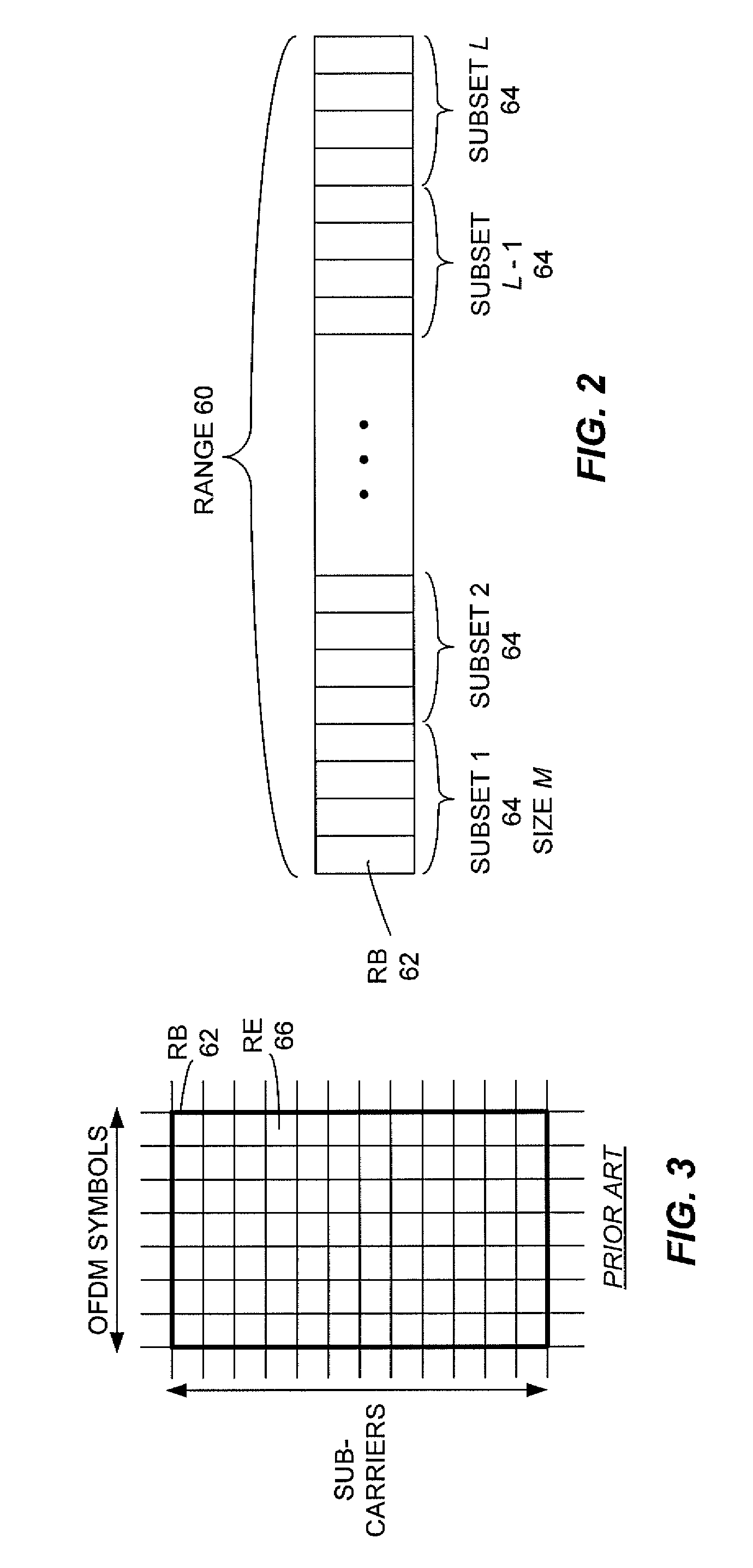Method and Apparatus for Contention-Based Granting in a Wireless Communication Network
a wireless communication network and wireless communication technology, applied in electrical devices, network traffic/resource management, wireless commuication services, etc., can solve the problems of reducing the signaling overhead, affecting the success of transmission, and correspondingly entail significant and undesirable increases in the signaling overhead. , to achieve the effect of reducing the signaling load of the pdcch
- Summary
- Abstract
- Description
- Claims
- Application Information
AI Technical Summary
Benefits of technology
Problems solved by technology
Method used
Image
Examples
Embodiment Construction
ample case.
[0019]FIG. 4 is a logic flow diagram of one embodiment of a method of processing at a wireless communication network base station.
[0020]FIG. 5 is a logic flow diagram of one embodiment of a method of processing at a user terminal.
[0021]FIGS. 6A and 6B illustrate a table of example Modulation and Coding Scheme, “MCS”, selections, which can be used to control the MCS parameters adopted by a user terminal for making a contention-based uplink transmission.
[0022]FIG. 7 illustrates a table of access probability control values, which can be used to control the probability at which individual user terminals decide whether to make a contention-based uplink transmission.
DETAILED DESCRIPTION
[0023]FIG. 1 partially illustrates a wireless communication network 10, including a Radio Access Network, “RAN”, 12 and an associated Core Network, “CN”, 14. In one example embodiment, the wireless communication network 10 comprises a 3GPP LTE network, wherein the RAN 12 is an LTE-based radio acc...
PUM
 Login to View More
Login to View More Abstract
Description
Claims
Application Information
 Login to View More
Login to View More - R&D
- Intellectual Property
- Life Sciences
- Materials
- Tech Scout
- Unparalleled Data Quality
- Higher Quality Content
- 60% Fewer Hallucinations
Browse by: Latest US Patents, China's latest patents, Technical Efficacy Thesaurus, Application Domain, Technology Topic, Popular Technical Reports.
© 2025 PatSnap. All rights reserved.Legal|Privacy policy|Modern Slavery Act Transparency Statement|Sitemap|About US| Contact US: help@patsnap.com



